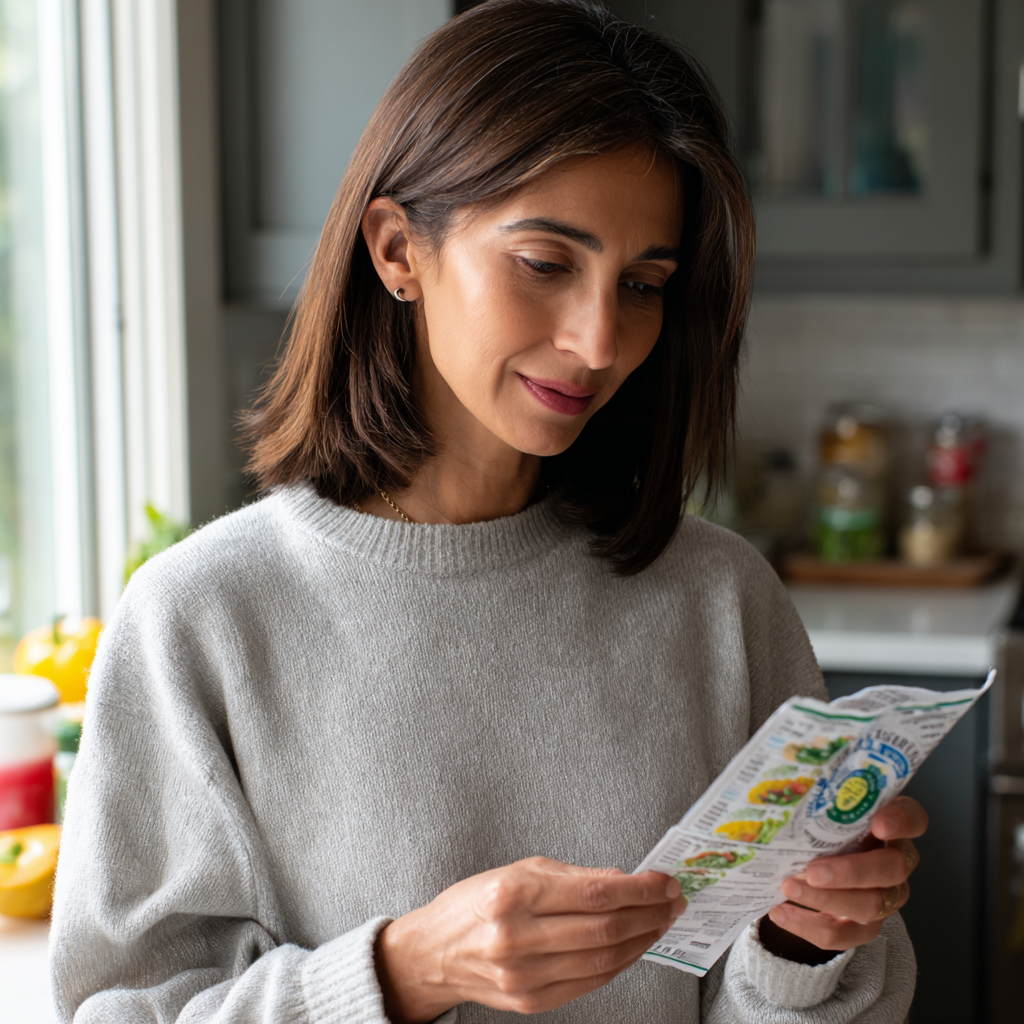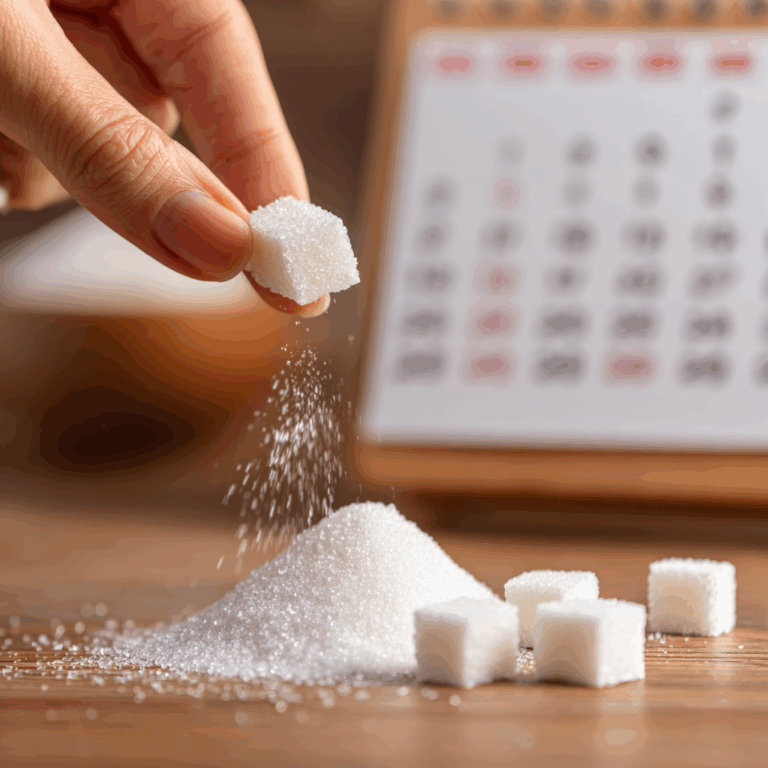By Mike, The SugarFreeMan
Founder of SugarDetox.com and the 30-Day Sugar Freedom Challenge
If you’ve ever tried to quit sugar, you already know the truth: those first few days are brutal. The cravings hit hard, and you can’t always see what sugar is doing to your body in real time. That’s one of the biggest challenges-sugar damage takes years to show up, so it’s easy to convince yourself that “just a little bit” won’t hurt.
But now, a new wave of technology is changing that. Perfectly healthy people are strapping on diabetes monitors to see what sugar is really doing inside their bodies. And the results are shocking.
Featured Snippet Summary:
Continuous glucose monitors (CGMs) are no longer just for people with diabetes. More and more health-conscious individuals are using them to track sugar spikes, understand cravings, and build healthier habits in real time.

This article was review by Dr. Camela McGrath, MD, FACOG. Find more about her here
The Rise of the Quantified-Self Movement
If you wear a Fitbit, track your steps on your phone, or log your meals in an app-you’re already part of the quantified-self movement. It’s the idea that if we can measure our behavior, we can change it.
Continuous Glucose Monitors (CGMs) fit perfectly into this movement. Instead of guessing what your breakfast or that fast-food lunch did to your blood sugar, you can see it instantly on your phone.
- A little patch (like a nicotine patch) sits on your arm.
- It continuously measures your glucose levels.
- The data streams to your smartphone in real time.
Why it matters: When you see the spike from that soda or the crash after a donut, it’s no longer abstract. It’s your body, right now, reacting to sugar. That instant feedback changes behavior faster than any lecture ever could.
“Knowledge isn’t power. Applied knowledge is power-and CGMs make applying it unavoidable.”
Action Step:
You don’t need a CGM yet to learn this lesson. Start your own mini “quantified self” experiment:
- Keep a food journal for one week.
- Record how you feel 30, 60, and 120 minutes after each meal (energy, focus, cravings).
- Notice patterns. The foods that spike cravings will show themselves.
Why Sugar’s Damage Is So Hard to See
The biggest challenge in educating people about sugar is that the consequences take years to appear. Type 2 diabetes, fatty liver, weight gain, inflammation-they all build slowly. By the time the damage is obvious, the habit is deeply ingrained.
CGMs cut through that delay. Suddenly you see that “just a little bit” isn’t harmless. You see that “treat yourself” moment leads to a 90-minute blood sugar rollercoaster.
According to the CDC, these repeated spikes and crashes don’t just make you tired-they push your body toward insulin resistance, the root of prediabetes and diabetes.
Action Step:
Next time you eat a sugar-heavy meal, pay attention:
- Do you feel more tired within an hour?
- Do you crave more sugar two hours later?
- That’s your body showing you the sugar cycle in real time.
The Emotional Rollercoaster of Quitting Sugar

Here’s what most people don’t expect: it’s not just physical. The emotions hit hard, too.
I’ve worked with thousands of people through detox. Around day 10 to 15, many report uncontrollable weeping, sadness, or irritability that seems to come from nowhere. Families and work don’t always understand. It feels scary-like something is wrong with you.
But here’s the truth: nothing is wrong. It’s part of the healing. For years, sugar has been your emotional regulator. When you take it away, the emotions come rushing back.
Most people cave right here. They think they can’t handle it. But when you know it’s coming-and when you have support-you can walk through it.
“Sugar detox isn’t just about food. It’s about learning to live without the crutch you’ve always leaned on.”
Action Step:
If you’re hitting that emotional wall:
- Don’t isolate. Talk about it.
- Journal what you’re feeling-get it out of your head.
- Remind yourself: this wave will pass.
Why CGMs Won’t Solve Sugar Addiction Alone
A CGM can show you the spike, but it can’t stop you from reaching into the pantry at 9pm. That’s where the deeper work begins.
I’ve seen it countless times: someone loses weight, feels amazing, then-boom-back to the sugar. They don’t even know why.
Often, it’s fear. Fear of feeling good. Fear of being seen without the “shield” of weight. Fear of living without the numbing effect sugar provided.
That’s why information alone isn’t enough. You need:
- A clear path from detox to long-term sugar freedom.
- A community that understands the emotional side.
- A step-by-step system that helps you rebuild habits after the initial detox.
If you’re serious about this, our 30-Day Sugar Detox Challenge will walk you through every step. You don’t have to guess anymore.
What Success Really Looks Like
Real success isn’t just “I quit sugar.” It’s learning to live free from it-physically, mentally, and emotionally.
- Physically: Your body stabilizes, energy returns, weight normalizes.
- Mentally: The fog lifts, cravings lose their grip, you think clearly again.
- Emotionally: You learn to handle stress, sadness, and joy without reaching for sugar.
It’s not instant. It’s a journey. But it’s worth it.
Action Step:
Don’t chase perfection. Chase progress. Every sugar-free day builds strength for the next.

Your Path to Freedom
We may not have built-in virtual reality monitors for sugar addiction yet-but we do have a proven map from sugar overload to sugar freedom.
If you’re ready to stop falling into the same cycle-quit, relapse, guilt, repeat-and you want real support this time, I’d love for you to join us.
Start your journey today with the 30-Day Sugar Detox Challenge. You’ll get step-by-step guidance, community support, and the exact path I’ve used to help thousands break free.
About the Author
Mike Collins, known as “The SugarFreeMan,” has been sugar-free for over 35 years and is the founder of SugarDetox.com. He has helped tens of thousands of people break free from sugar addiction through his evidence-based approach combining nutritional science with practical behavior change strategies.
Medical Disclaimer
This article is for educational purposes only and is not intended to replace professional medical advice. Always consult with a healthcare provider before making significant dietary changes, especially if you have underlying health conditions.
FAQs
1. What is a continuous glucose monitor (CGM)?
A CGM is a small device that measures your blood sugar in real time and sends the data to your smartphone.
2. Why are non-diabetics using CGMs?
Health-conscious people use them to see how food affects their blood sugar, cravings, and energy, helping them make better choices.
3. Do I need a CGM to do a sugar detox?
No. While helpful, you can successfully detox from sugar without one. Food journaling, mindfulness, and community support are powerful tools.
4. Why do I feel emotional when I quit sugar?
Sugar numbs emotions. When you remove it, feelings resurface. This is normal and temporary, not a sign of failure.
5. How can I avoid relapsing after a sugar detox?
Plan for life after detox. Build supportive habits, stay connected to a community, and understand your triggers. Our 30-Day Challenge guides you through this
.6. Is sugar addiction real?
Yes. Research confirms sugar can hijack the brain’s reward pathways similar to addictive substances. Harvard Health and the NIH both recognize sugar’s addictive properties.






